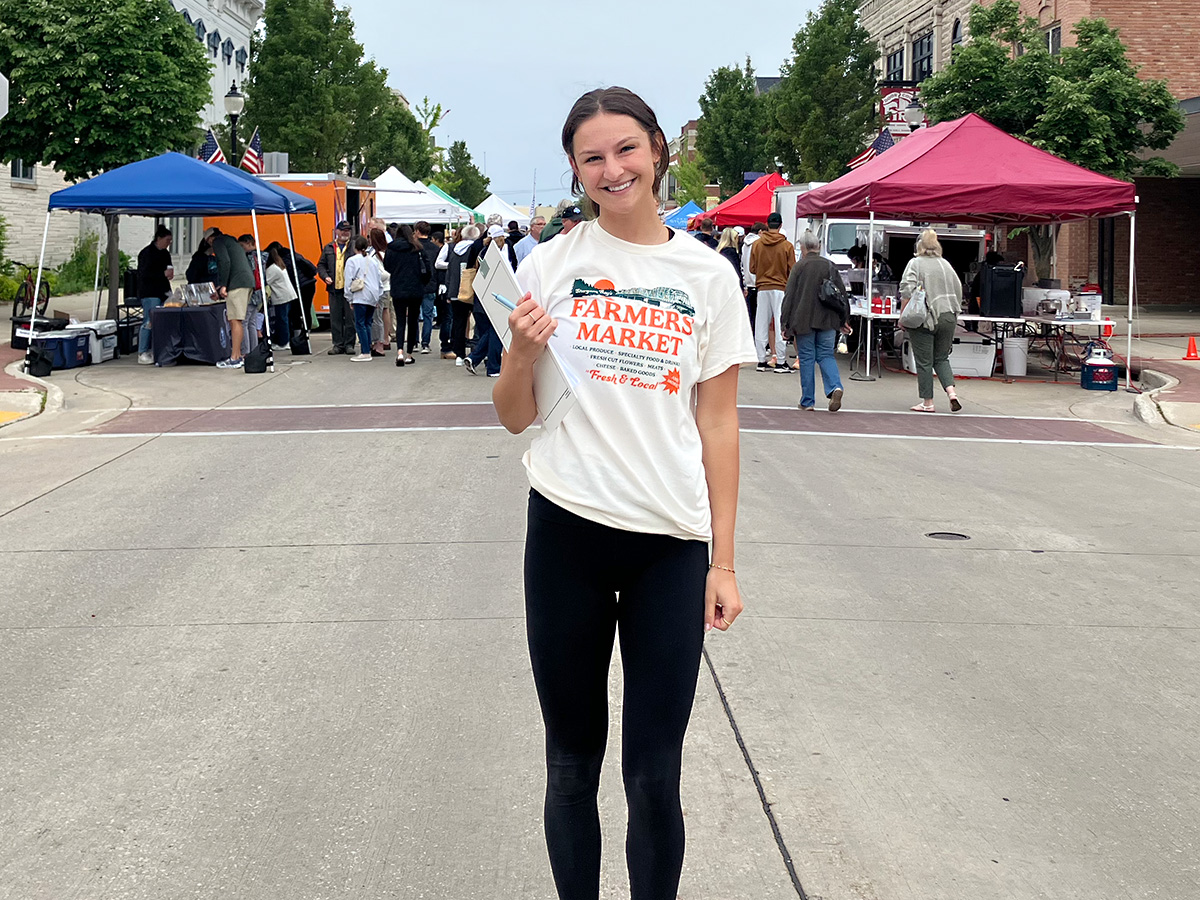An estimated 20 percent of the trash going into Wisconsin landfills from 2020 to 2021 was food, according to a study from the Wisconsin Department of Natural Resources. The DNR sampled municipal and residential solid waste in state landfills in their report and estimated more than three quarters of food waste was still consumable.
That amounts to about 220 pounds for every person in the state.
Armed with a clipboard and a bright smile, Kendra Dantoin has been spending her Saturdays in June cultivating a small, local solution to the problem of wasted food. A Brussels native and intern for the UW-Madison Extension program FoodWIse, Kendra arrives at the Sturgeon Bay farmers market around 9:00 a.m. to make her rounds.
Kendra is at the market to get to know farmers, connect with other organizations and glean. Gleaning is the term used for collecting unsold or excess fresh foods from farms, gardens, farmers markets, grocery stores, restaurants or anywhere else it’s available and getting it to those experiencing food insecurity. There are several gleaning programs established throughout the U.S.
In four weeks, under Kendra’s leadership, Sturgeon Bay farmers market vendors Big Dog Farms, Bordeau’s Farm Market, Chue’s Produce, Grow Door County, Sully’s Produce LLC, and Wild Easton’s sent 99 pounds of unsold produce to the Lakeshore CAP food pantry on 3rd Ave.
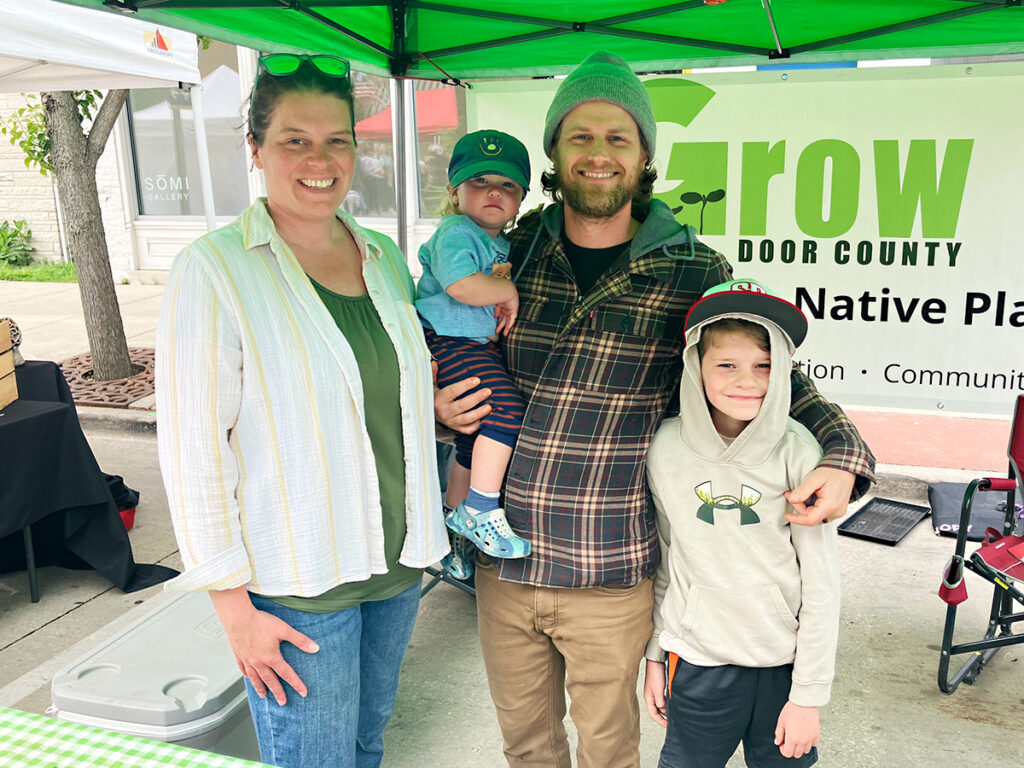
Before checking in with market farmers, Kendra stops at the Destination Sturgeon Bay tent first to say hello to Andrea Hanson and staff. Hanson is the market manager and events director for Destination Sturgeon Bay. The organization took over the management of the market from the city four years ago.
Kendra came along “at the perfect time,” according to Hanson. “We’d tossed the idea (of gleaning) around in the office. With a food pantry located in the market, it seemed like a no-brainer…she (Kendra) set up everything. We’re incredibly lucky to have it.”
Lakeshore CAP’s food pantry is right on Third Avenue where the market takes place, and according to pantry director Sandi Soik, the organization feels lucky to have Kendra’s efforts too.
Fresh, healthy food is at a premium on food pantry shelves, Soik said, because local produce has a relatively short shelf life and can be costly. Recent federal cuts to USDA food assistance programs has made it more difficult for needy families to access fresh healthy food. Gleaning is one way to get some of that food to pantries.
Kendra is in her first year of the dietetics master’s program at UW-Green Bay. Her internship with FoodWIse this summer led her to the idea of organizing a gleanings program at the Sturgeon Bay market. It was inspired by a similar program in Manitowoc that is in its third year.
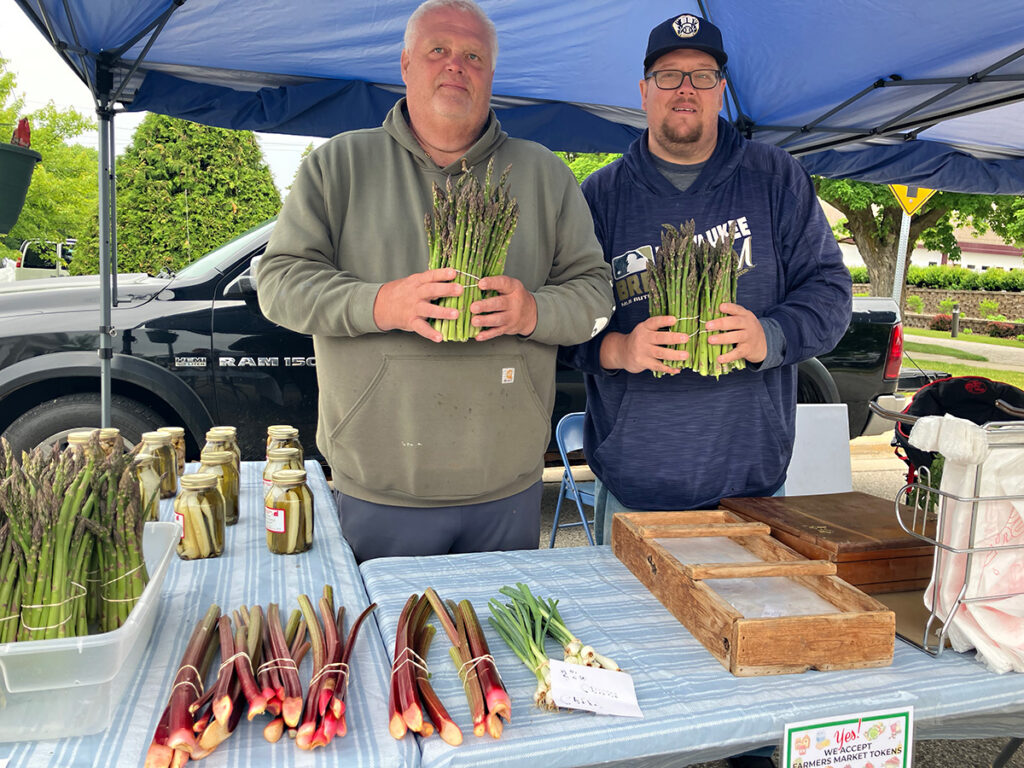
Glean Manitowoc has collected over 3,000 pounds of farm market produce in the past two years and distributed it to a local pantry. The youth group that launched that project received two grants from 4-H and one of their goals was to help other communities start gleaning as well. Some of the leftover grant money was used to purchase collection bags for Kendra’s efforts.
Those bags are steadily filling, according to Kendra. The amount of produce donated has doubled every week since she began gleaning Memorial Day weekend.
After checking in with market management, Kendra makes a stop at the United Way of Door County tent to have a chat with volunteers about the progress of her initiative and to find out more information about the role food assistance plays at the market. FoodWIse, where Kendra interns, is funded by the U.S. Department of Agriculture and provides nutrition education and resources for Wisconsin Supplemental Nutrition Assistance Program, or SNAP, benefit recipients who can use their Electronic Benefit Transfer card on farmers market products.
SNAP recipients can take their EBT card to the United Way tent at the farmers market and purchase tokens to spend on fruit, vegetables and other locally-produced food items. Vendors collect the tokens and return them to United Way for reimbursement.
Recipients able to use SNAP benefits at the farmers market is one way to get fresh produce and healthy foods to people who depend on food assistance. Kendra, as someone who is working on another food assistance initiative, knows part of her role is communication and making sure the vendors she works with understand what assistance programs are available to market-goers and how they can participate.
Grow Door County has been bringing their microgreens and other products to the Sturgeon Bay market for a few years. Alexis Heim Peter and Matt Peter run the operation and are also involved in community organization and mutual aid work.
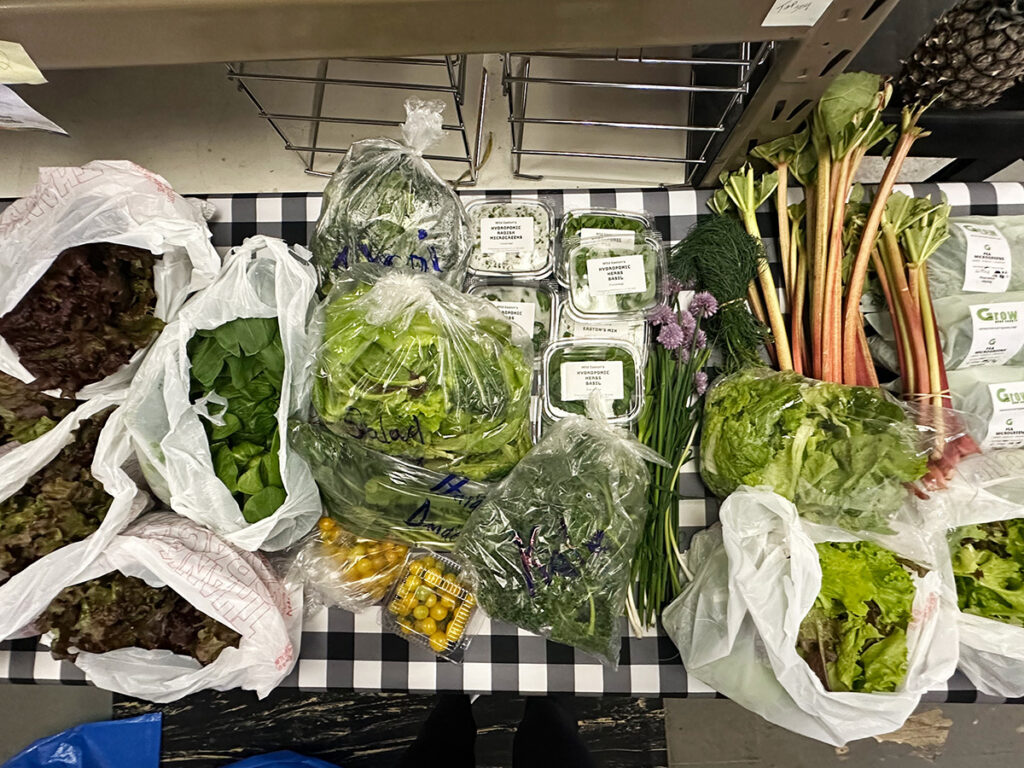
“Because we’re a local food producer, we feel some responsibility to provide healthy food to people who need food assistance, not just those that can pay for it,” Matt said. “We feel responsible but also happy to be able to provide healthy year-round produce.”
The other vendors participating in the gleanings initiative expressed similar sentiments.
“Farmers, if they can, should be doing this. It’s unfortunate some people are down on their luck right now, and we need to help people as much as we can,” according to Bob Bordeau, who owns Bordeau’s Farm Market with his wife, Joy. He took the business over from his father a decade ago. The Bordeaus have been able to donate leftover asparagus, rhubarb and greens to the project so far.
Participating vendors also agree Kendra herself is another reason the gleanings initiative is appealing to them.
“Energetic”, “positive”, and “personable” are some of the ways market vendors describe Kendra.
A similar initiative was tried a number of years ago and “fizzled out,” according to Kendra. Volunteers from the Lakeshore CAP pantry struggled to keep up produce collection, Soik said. All of them were retired and were already committed to weekday pantry hours. Additionally, vendors had to take their donations to another tent to be collected and weighed.
It was too much to ask of vendors at the end of a long market day already, according to Kendra, so she streamlined the process. She drops off the bags and does all the collecting at the end of the market, weighs it, records the amounts and types of produce, takes it to Lakeshore CAP, and puts it in the pantry refrigerator for Tuesday distribution.
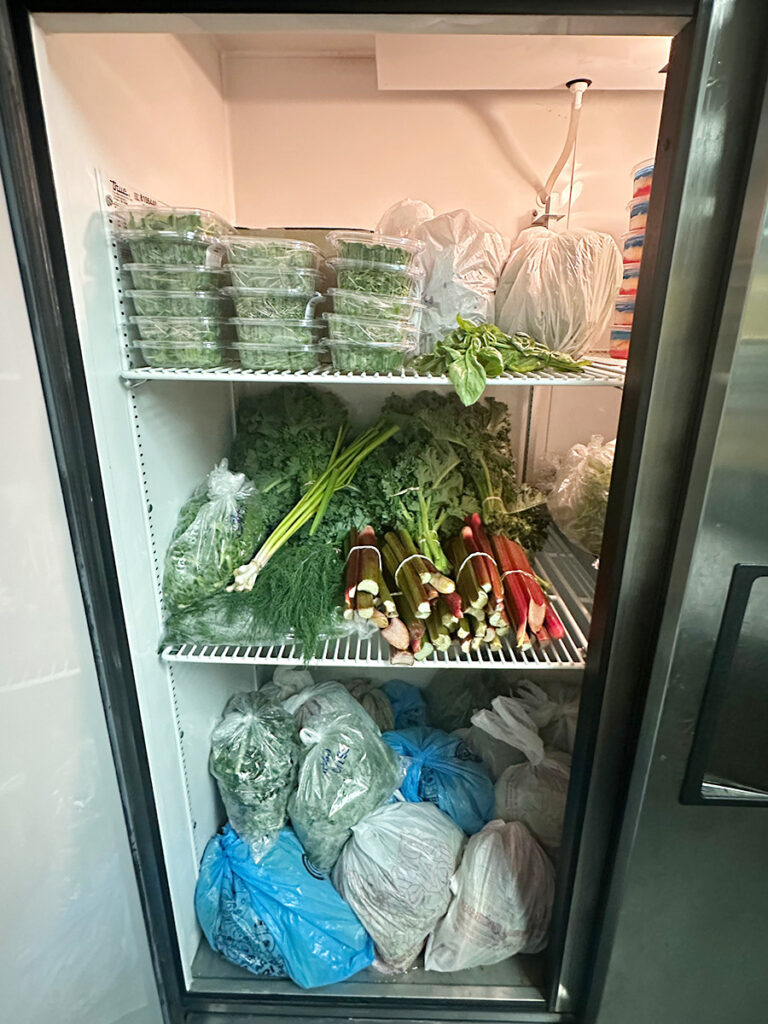
All the vendors have to do is hand her their extra produce from that day, she added, and it takes her about 45 minutes to collect and deliver it to the pantry.
Kendra is an example of how it only takes one person to get a good thing going, Matt Peter said. “There’s a lot of issues in the community that need progress. It’s like pushing a boulder, it takes one person to start pushing and get momentum going, then other people join in and it keeps rolling along.”
Kendra’s last day at the market was June 28 and she has been looking for individuals or an organization to take over the gleaning for the rest of the season. For now, Destination Sturgeon Bay will collect produce, and all vendors said they would like to see the program continue.
They will have a lot more to donate later in the season, Bordeau said, when items like tomatoes, squash, cucumbers, and beans will be ready to harvest.
Acknowledgement is another piece of what Kendra has been focusing on to start the initiative, she said, because there is no face-to-face handoff when the growers donate their harvest, like there is at the market. Kendra takes photos of both vendors and recipients and shares them on a bulletin board at the pantry and through FoodWIse’s newsletter and website.
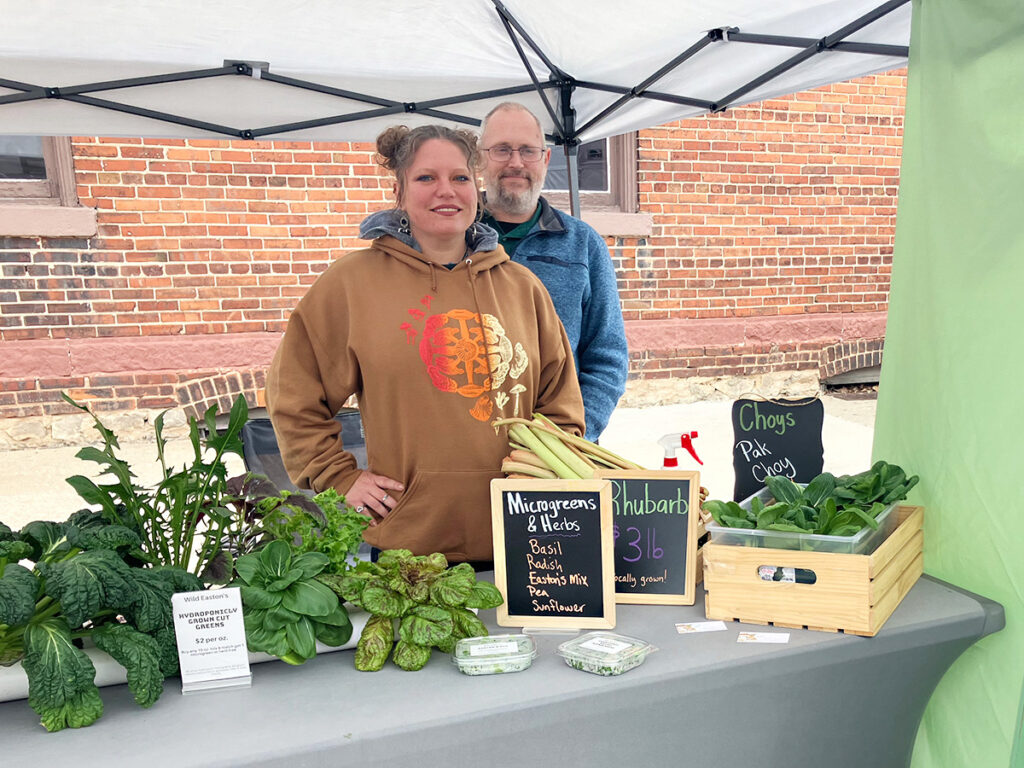
Kendra collects “stories, quotes and testimonials” from food recipients and makes sure to relay them to vendors, she said. For example, she lets them know that all of the gleaned produce is gone by 2 p.m. on Tuesdays. The pantry opens at 11 a.m.
“It’s wonderful, beautiful stuff you don’t even find in grocery stores,” Soik said. “Everyone loves it.” She said that fresh, locally grown produce is important to many area families who do not have the space or ability to garden on their own.
Gleaning is also filling a gap, Soik said. The federal government cut the amount of food provided by the USDA to pantries earlier this year. Lakeshore CAP now receives half of what they got before the cuts, she said, and rarely receives fresh produce at all.
Hometown girl
Movement and athletics were a big part of Kendra’s life growing up in Brussels. She graduated from Southern Door High School where she played a lot of sports. Kendra’s family is sporty as well, she said. Her mom works at the YMCA, her dad coaches and her two older sisters play as well.
She enrolled in UW-Milwaukee as an undecided undergrad, but by second semester had declared a health and nutrition major. She was motivated by her sports background, she said, but “didn’t want to make my career revolve around physical activity.”
Kendra encountered issues surrounding food insecurity during her time at UW-Milwaukee, she said, and spent a lot of time in community gardens and food pantries in that urban environment.
“Being in Milwaukee opened my eyes to a lot of things,” she said. However, it was not until she brought her experiences home and started pursuing a masters in dietetics that she started thinking about working in the field to directly address hunger and need. Previously she had been focused on working in the medical field as a registered dietician in a hospital, she said.
An internship in the Howard-Suamico school district and her most recent experience with FoodWIse showed Kendra there is a lot of work to be done on food insecurity in her own community.
“The amount of produce accessible to you is not to everyone,” Kendra said. A lot of people think food insecurity means no access to food, she added, but it also means limited access to nutritious and quality food.
“Food insecurity doesn’t mean you don’t have money,” Kendra said. Sometimes people are going through a hard time, she added, and bringing nutrient-dense, quality foods to people who need it has given her a sense of fulfillment she has not received elsewhere.
“I am helping to take little steps to bring that food to lower income families,” she said.
What will it take to continue
Walking with Kendra through the market means stopping every 10 feet or so to chat with someone who she went to school with, played sports with or knows from the community. Her local status definitely helps her make connections with market vendors, she said.
With her departure, she hopes the gleaning will continue and maybe even expand to other farmers markets and pantries in Door County, but it will take “another set of hands, someone who is passionate and who will take the time,” Kendra said.
“Everyone is profiting from this initiative, and it’s so beautiful from so many different perspectives. It’s not just another thing to have to do on a Saturday.”
Hanson at Destination Sturgeon Bay said she hopes to find more volunteers to assist with produce collection and delivery. Thanks to the framework Kendra has in place, it would not take much for someone else to step into the role, according to Hanson.
Other area farmers markets or pantries interested in the process can contact FoodWIse or Destination Sturgeon Bay for how to start their own initiative or to volunteer.

